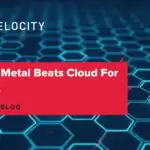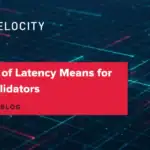Which Network Pays Validators Best in 2025?
Blockchain validators face a critical decision: which network offers the highest risk-adjusted returns on their infrastructure investments? With staking rewards varying dramatically across networks and operational costs continuing to climb, understanding the complete validator economics picture has never been more important.
This comprehensive analysis examines the most profitable Proof-of-Stake networks for professional validator operations in 2025, evaluating not just headline APY figures, but the complete financial equation including revenue sources, operational expenses, and risk factors that determine true net profitability.
The findings reveal that validator success depends heavily on technical capabilities, capital allocation, and risk tolerance—with some surprising winners emerging when all factors are considered.
Methodology & Normalization
Comparing validator economics across different blockchain networks requires careful normalization to ensure accurate analysis. This evaluation framework considers profitability as a function of net income, accounting for three primary variables: revenue streams, operational expenditures, and network-specific risks.
The analysis focuses on established networks with mature validator ecosystems and sufficient data for reliable comparison. Each network’s economics are evaluated based on current market conditions and projected trends for 2025, with particular attention to how different operational approaches affect bottom-line profitability.
This approach moves beyond simple APY comparisons to provide infrastructure operators with actionable insights for capital allocation decisions.
Revenue Components
Validator revenue streams consist of three primary components that vary significantly across networks. Understanding these sources is essential for projecting long-term profitability.
Protocol-Based Rewards
Block rewards from new token issuance form the foundation of validator economics. These rewards follow predetermined monetary policies designed to incentivize network security:
Solana operates on a disinflationary schedule starting at 8% inflation, decreasing 15% annually until reaching a 1.5% floor. Current inflation sits at approximately 4.234%, providing predictable base rewards that decrease over time.
Avalanche offers approximately 8.5% staking rewards with a unique advantage—no slashing of validator principal stake, making it particularly attractive for risk-averse operators.
Ethereum has matured to provide stable 3-5% APY from consensus layer rewards, though this rate has compressed as validator participation increased to 28.5% of total ETH supply.
Cosmos Hub distributes rewards proportionally to active validators, currently offering 18-21% APR—among the highest base rates in the ecosystem.
Transaction Fees and Tips
Network usage directly impacts validator profitability through transaction-based fees. Higher throughput networks with active DeFi ecosystems typically generate more fee revenue:
Solana allocates 50% of transaction fees to the block leader, with the remaining 50% burned. This creates a deflationary pressure while rewarding active validators.
Ethereum validators receive priority fees (tips) as a central component of execution layer rewards, contributing approximately 17% of total validator income on average.
Cosmos Hub validators proposing blocks can earn bonus fees of 1-5% from transactions within their blocks, though this represents a smaller portion of total rewards compared to inflationary rewards.
MEV (Maximal Extractable Value)
MEV represents sophisticated value extraction through transaction ordering and represents a growing revenue source for technically capable validators:
Solana has rapidly developed MEV infrastructure through Jito Labs, with MEV contributing 15-25% to total validator rewards and projected to grow further as the ecosystem matures.
Ethereum maintains the most sophisticated MEV ecosystem centered around Flashbots’ MEV-Boost, contributing approximately 3% additional APY on average, though individual blocks can generate substantially higher returns.
Avalanche is implementing Proposer-Builder Separation frameworks through Chorus One and MEV Zone, indicating future MEV opportunities.
Operating Costs
Infrastructure costs represent the largest variable in validator profitability calculations. These expenses fall into capital expenditures (CapEx) and ongoing operational costs (OpEx).
Hardware Requirements
Network-specific hardware demands create significant cost variations:
Solana requires high-performance specifications: 24+ core CPUs, 512GB-1TB RAM, and multiple high-endurance NVMe SSDs. Annual hardware costs typically reach $60,000 including vote transaction fees.
Ethereum operates efficiently on modest hardware: 8-core CPU, 32GB RAM, and 2TB NVMe SSD, making it accessible for smaller operators.
Avalanche maintains reasonable hardware requirements while offering competitive returns, contributing to its favorable risk-adjusted profile.
Hosting Options
Infrastructure deployment strategy significantly impacts operational costs:
Bare Metal servers provide optimal performance but require substantial upfront investment, with high-end servers costing $2,500-$50,000 depending on specifications.
Cloud hosting offers flexibility at higher recurring costs, with standard Ethereum nodes costing $500-$2,000 monthly and high-performance Solana validators exceeding $4,000 monthly on major cloud platforms.
Colocation combines bare metal performance with professional infrastructure, averaging approximately $163 per kilowatt monthly.
Risk & Penalties
Network-specific penalty structures directly impact net yields through slashing and downtime risks.
Avalanche stands out by implementing no slashing penalties on validator principal stake, requiring only 80% uptime for reward eligibility. This significantly reduces risk exposure compared to other networks.
Ethereum implements graduated slashing penalties for various infractions, with correlation penalties increasing during mass slashing events.
Solana penalizes missed votes and can slash validator stake for double-voting or other protocol violations.
Participation Constraints
Entry requirements and operational constraints affect validator accessibility and potential returns.
Most networks require significant minimum stakes: Avalanche requires 2,000 AVAX minimum with a mandatory 2% commission floor. Ethereum requires 32 ETH per validator, while Solana has no fixed minimum but practical operation requires substantial delegated stake to cover fixed costs.
Delegation models vary significantly, with some networks capping validator sets or implementing queues during high-demand periods.
Network Analysis
Solana: High-Throughput Revenue Generation
Solana presents compelling gross revenue potential through its high-throughput architecture and mature MEV ecosystem. The network’s unique combination of high transaction volumes and sophisticated MEV capture tools enables technically proficient validators to generate substantial returns.
However, Solana’s appeal comes with significant operational overhead. Annual costs of approximately $60,000 include both hardware expenses and mandatory vote transaction fees that continue regardless of delegation levels. This creates a high break-even threshold requiring substantial staked SOL to achieve profitability.
MEV opportunities through Jito Labs can contribute 15-25% additional revenue, making technical expertise in MEV extraction a competitive advantage for Solana validators.
Avalanche: Risk-Adjusted Excellence
Avalanche emerges as a compelling choice for risk-adjusted returns, offering approximately 8.5% staking rewards with unique risk mitigation features. The network’s no-slashing policy for validator principal stake significantly reduces downside risk compared to other high-yield networks.
The combination of competitive yields, reasonable hardware requirements, and reduced slashing risk creates an attractive profile for institutional validators prioritizing capital preservation alongside returns.
Ethereum: The Institutional Standard
Ethereum represents the institutional benchmark with mature, predictable revenue streams. Validators earn from both consensus layer rewards (approximately 3% base) and execution layer opportunities (priority fees and MEV contributing roughly 20% additional income).
The network’s stability, extensive tooling, and institutional adoption make it suitable for large-scale professional operations, though yield compression from increased validator participation has reduced overall returns.
Cosmos Hub: High-Yield Opportunity
Cosmos Hub offers among the highest base yields at 18-21% APR, primarily from inflationary rewards. This creates attractive absolute returns, though operators should consider the sustainability of high inflation rates and potential token price impacts.
The network’s relatively straightforward operation and high yields make it attractive for validators comfortable with higher inflation-based reward structures.
Comparative Analysis of Staking Rewards
Current yield analysis reveals significant variation across networks:
- Cosmos Hub: 18-21% APR (highest base yields)
- Polkadot: 11.5% (recently reduced from higher levels)
- Avalanche: 7-8% (with no slashing risk)
- Aptos: ~7% (emerging network)
- Solana: 6-7% base (plus substantial MEV potential)
- Ethereum: ~3.13% (including MEV, down from higher levels)
These figures represent gross yields before operational costs and risk adjustments. Net profitability calculations must account for hardware, hosting, and operational expenses that vary significantly by network.
Which Network Offers the Best Risk-Adjusted Returns?
The question of “best” validator returns depends entirely on operator capabilities and risk tolerance. For technically sophisticated operators comfortable with high-performance infrastructure, Solana’s MEV opportunities can generate exceptional returns despite high operational costs.
Risk-averse institutional operators may find Avalanche’s no-slashing policy and competitive yields optimal for their profiles. Traditional institutional validators often prefer Ethereum’s stability and mature ecosystem despite compressed yields.
Operators seeking maximum absolute yields should examine Cosmos Hub’s inflation-based rewards, while those prioritizing operational simplicity might prefer networks with lower hardware requirements.
Key Takeaways for Validator Operators
Successful validator operations in 2025 require matching network selection to operational capabilities. High-performance networks like Solana reward technical expertise and infrastructure investment, while networks like Avalanche optimize for risk-adjusted returns.
MEV capture capabilities increasingly differentiate profitable validators from marginal operators across networks with sophisticated MEV ecosystems. Operators should evaluate their technical capabilities against potential MEV income when selecting networks.
Infrastructure costs represent the primary variable in validator profitability. Operators must carefully model hardware, hosting, and operational expenses against projected revenues to ensure sustainable operations.
Host Your Validator With Hivelocity
Professional validator operations demand infrastructure optimized for blockchain workloads. Hivelocity’s bare metal servers provide the performance, reliability, and global reach required for successful validator operations across multiple networks.
With 50+ global locations, instant deployment, and configurations optimized for networks like Solana’s high-performance requirements, Hivelocity enables validators to maximize uptime and minimize operational complexity. Our infrastructure supports the demanding requirements of modern validator operations while providing the geographic distribution essential for optimal network participation.
Host Your Validator With Hivelocity and optimize your validator economics with purpose-built infrastructure.


